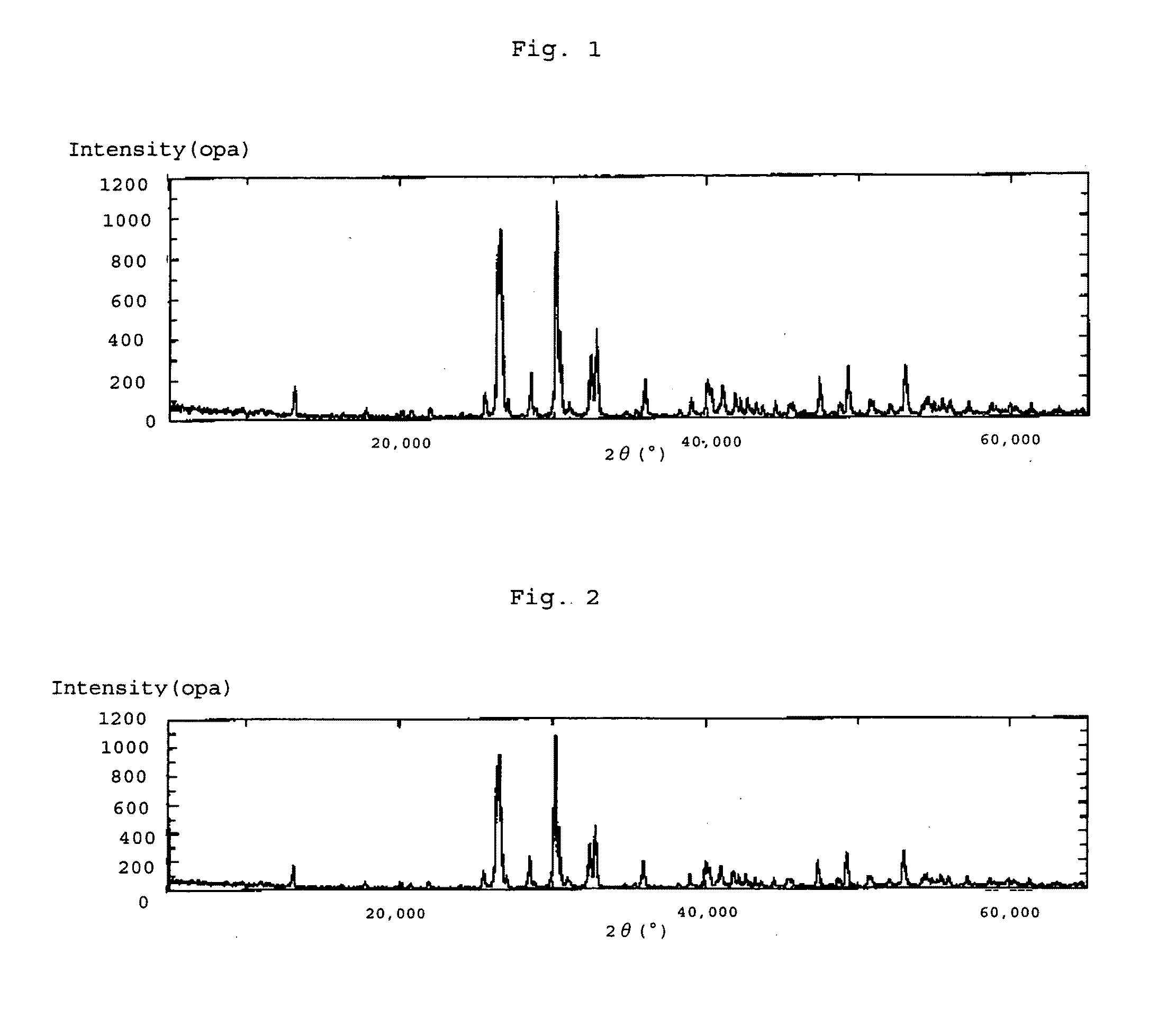Anhydrous dicalcium phosphate particles and production method thereof
a technology of dicalcium phosphate and dicalcium phosphate, which is applied in the field of anhydrous dicalcium phosphate particles, can solve problems such as deterioration of handling properties, and achieve the effects of small variation in size, high tableting strength, and small bulk
- Summary
- Abstract
- Description
- Claims
- Application Information
AI Technical Summary
Benefits of technology
Problems solved by technology
Method used
Image
Examples
example 1
Synthesis Example 1
[0060]2.6 liters of lime milk having a CaO content of 80 g / L and 1 liter of a phosphoric acid aqueous solution having a concentration of 405 g / L were prepared by heating at 85° C. The phosphoric acid aqueous solution heated at 85° C. was injected into a reactor and the lime milk heated at 85° C. was added to the aqueous solution under agitation. After the molar ratio of CaO to H3PO4 reached 0.3, the injection of a sodium hydroxide aqueous solution into the reactor was started. The total amount of the sodium hydroxide aqueous solution added was adjusted to ensure that the molar ratio of Na to P became 0.015. The temperature of the reaction solution was maintained at 85° C. or higher. After the end of a reaction, the obtained slurry was washed and dried at 120° C. for 2 hours to obtain agglomerated anhydrous dicalcium phosphate particles. The reaction conditions and the measured physical property values are shown in Table 1.
[0061]FIG. 1 and FIG. 2 are an X-ray diffr...
synthesis example 2
[0062]When a reaction was carried out in the same manner as in Synthesis Example 1 except that the total amount of the sodium hydroxide aqueous solution added was adjusted to ensure that the molar ratio of Na to P became 0.010, agglomerated anhydrous dicalcium phosphate particles were obtained. The reaction conditions and the measured physical property values are shown in Table 1.
synthesis example 3
[0063]When a reaction was carried out in the same manner as in Synthesis Example 1 except that the total amount of the sodium hydroxide aqueous solution added was adjusted to ensure that the molar ratio of Na to P became 0.42, a mixture of agglomerated anhydrous dicalcium phosphate particles and powdery calcium hydroxide particles was obtained. The reaction conditions and the measured physical property values are shown in Table 1.
PUM
| Property | Measurement | Unit |
|---|---|---|
| particle diameter | aaaaa | aaaaa |
| particle diameter | aaaaa | aaaaa |
| molar ratio | aaaaa | aaaaa |
Abstract
Description
Claims
Application Information
 Login to View More
Login to View More - R&D
- Intellectual Property
- Life Sciences
- Materials
- Tech Scout
- Unparalleled Data Quality
- Higher Quality Content
- 60% Fewer Hallucinations
Browse by: Latest US Patents, China's latest patents, Technical Efficacy Thesaurus, Application Domain, Technology Topic, Popular Technical Reports.
© 2025 PatSnap. All rights reserved.Legal|Privacy policy|Modern Slavery Act Transparency Statement|Sitemap|About US| Contact US: help@patsnap.com



